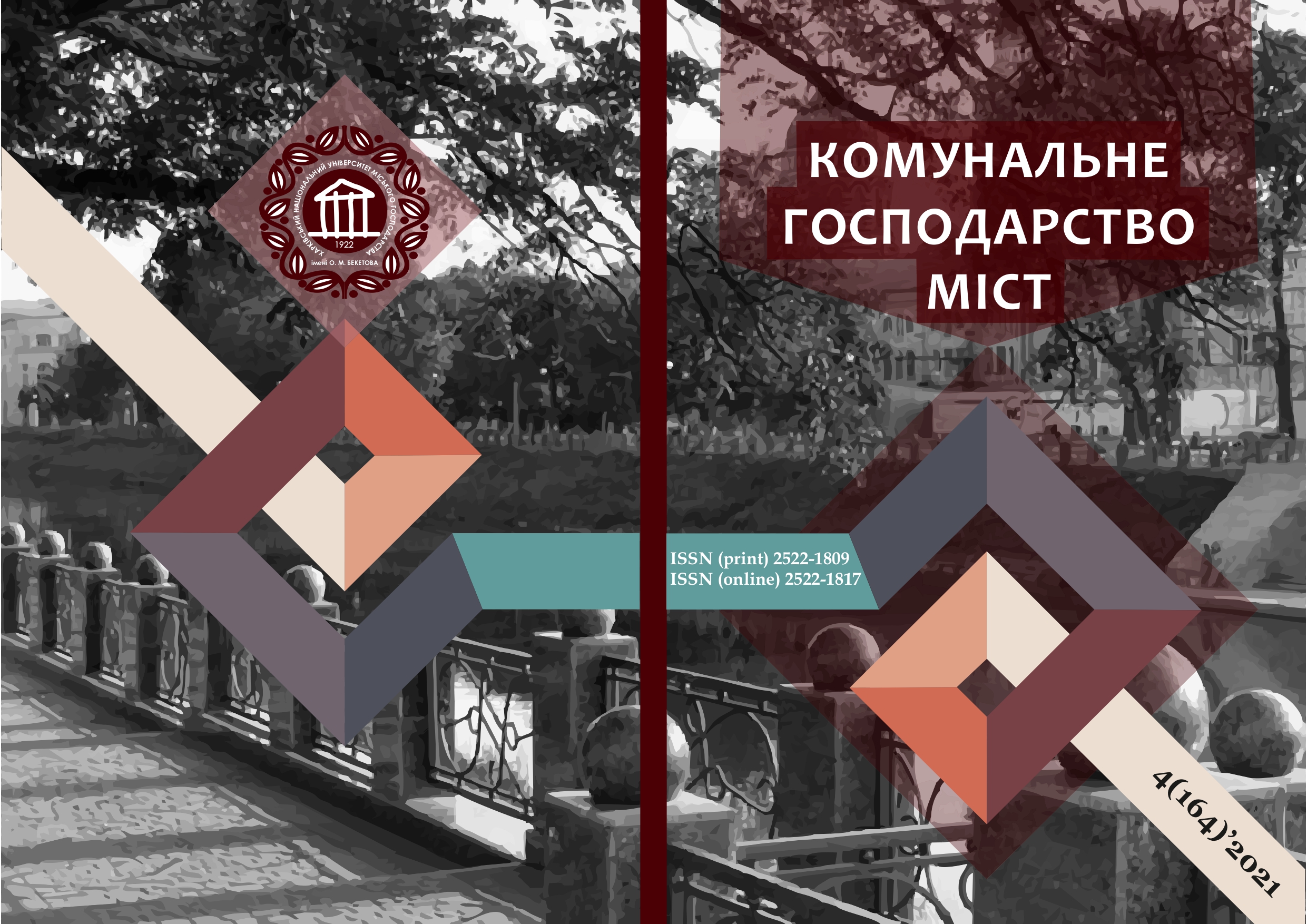ЗАСАДИ ОХОРОНИ ТА ВИКОРИСТАННЯ ОБ’ЄКТІВ КУЛЬТУРНОЇ СПАДЩИНИ В УМОВАХ ЕКОЛОГІЧНОЇ ОПТИМІЗАЦІЇ СЕЛЬБИЩНИХ ТЕРИТОРІЙ
Array
Ключові слова:
культурна спадщина, екологічна оптимізація, сельбищна територія, об’єкт, охорона.Анотація
У статті досліджено засади охорони та використання об’єктів культурної спадщини в умовах екологічної оптимізації сельбищних територій. Визначено поняття об’єкта культурної спадщини та встановлено порядок визначення охоронних зон об’єктів культурної спадщини в умовах екологічної оптимізації сельбищних територій.
Посилання
2. Ganets, S.V. (2017). Factors of formation of a new functional purpose of post-industrial territories. Modern problems of architecture and urban planning, 49, 293–299.
3. Topal, S.S. (2018). Principles and methods of improving the residential areas of the city of Odessa in order to humanize and ensure sustainable development. Urban Planning and Spatial Planning, 68, 562–567.
4. Novakovskaya, I.O. (2018). Economics of land use. Kyiv: Agrarian Science
5. Yigitcanlar, T. & Dizdaroglu, D. (2015). Ecological approaches in planning for sustainable cities: A review of the literature. Global journal of environmental science and management, 1 (2), 159–188. DOI: https://dx.doi.org/10.7508/gjesm.2015.02.008
6. Saghin, I., Ioja, C., Gavrilidis, A., Cercleux, L., Niță, M. & Vânău, G. (2012). Perception of the Industrial Areas Conversion in Romanian Cities-Indicator of Human Settlements Sustainability. In 48th ISOCARP Congress, 2–3.
7. Berens, C. (2010). Redeveloping industrial sites: a guide for architects, planners, and developers. John Wiley & Sons.
8. Petryshyn, H. (2016). Kształtowanie terenów nadwodnych Kopenhagi w kontekście rozwoju metropolitalnego. Przestrzeń i Forma, 25, 223–240. DOI: https://doi.org/10.21005/pif.2016.25.C-04
9. Brown, L.J. & Dixon, D. (2014). Urban design for an urban century: Shaping more livable, equitable, and resilient cities. John Wiley & Sons.
10. Ouředníček, M., Šimon, M., & Kopečná, M. (2015). The reurbanisation concept and its utility for contemporary research on post-socialist cities: The case of the Czech Republic. Moravian Geographical Reports, 23 (4), 26–35. DOI: http://dx.doi.org/10.1515/mgr-2015-0022
11. Baborska-Narożny, M. (2012). Rewitalizacja terenów poprzemysłowych-modele przekształceń na wybranych przykładach. Czasopismo techniczne. Architektura, 109 (3-A), 275–279.
12. Muszyńska-Jeleszyńska, D. & Jasińska, M. (2013). Rewitalizacja terenów poprzemysłowych w Europie Środkowej–doświadczenia projektu COBRAMAN. Problemy Rozwoju Miast, 10 (3), 95–104.
13. Coolen, H. (2008). The meaning of dwelling features: Conceptual and methodological issues, Vol. 24. Amsterdam, Delft University Press.
##submission.downloads##
Опубліковано
Як цитувати
Номер
Розділ
Ліцензія
Автори, які публікуються у цьому збірнику, погоджуються з наступними умовами:
- Автори залишають за собою право на авторство своєї роботи та передають журналу право першої публікації цієї роботи на умовах ліцензії CC BY-NC-ND 4.0 (із Зазначенням Авторства – Некомерційна – Без Похідних 4.0 Міжнародна), котра дозволяє іншим особам вільно розповсюджувати опубліковану роботу з обов'язковим посиланням на авторів оригінальної роботи та першу публікацію роботи у цьому журналі.
- Автори мають право укладати самостійні додаткові угоди щодо неексклюзивного розповсюдження роботи у тому вигляді, в якому вона була опублікована цим журналом (наприклад, розміщувати роботу в електронному сховищі установи або публікувати у складі монографії), за умови збереження посилання на першу публікацію роботи у цьому журналі.
- Політика журналу дозволяє і заохочує розміщення авторами в мережі Інтернет (наприклад, у сховищах установ або на особистих веб-сайтах) рукопису роботи, як до подання цього рукопису до редакції, так і під час його редакційного опрацювання, оскільки це сприяє виникненню продуктивної наукової дискусії та позитивно позначається на оперативності та динаміці цитування опублікованої роботи (див. The Effect of Open Access).

